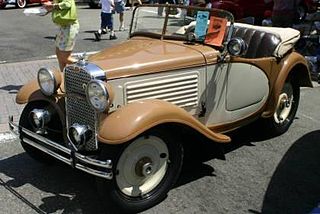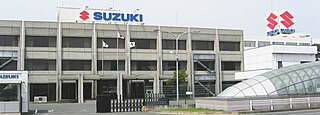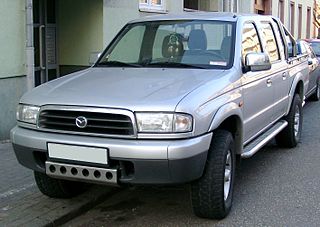This article needs additional citations for verification .(September 2017) (Learn how and when to remove this template message) |
The Courier Car Co. was an automobile manufacturer formed in 1909 by the Stoddard-Dayton Company in Dayton, Ohio, to produce smaller, lighter and lower-priced models than the luxury automobiles produced by Stoddard Dayton.

Stoddard-Dayton was a high quality car manufactured by Dayton Motor Car Company in Dayton, Ohio, USA, between 1905 and 1913. John W. Stoddard and his son Charles G. Stoddard were the principals in the company.

Dayton is the sixth-largest city in the state of Ohio and the county seat of Montgomery County. A small part of the city extends into Greene County. The 2017 U.S. census estimate put the city population at 140,371, while Greater Dayton was estimated to be at 803,416 residents. This makes Dayton the fourth-largest metropolitan area in Ohio and 63rd in the United States. Dayton is within Ohio's Miami Valley region, just north of Greater Cincinnati.

Ohio is a Midwestern state in the Great Lakes region of the United States. Of the fifty states, it is the 34th largest by area, the seventh most populous, and the tenth most densely populated. The state's capital and largest city is Columbus.
Its advertisements were early advocates of the compact car: "Don't buy more car than you need ... Don't you buy a car of greater power or capacity than you need." The cars were built on a 100-inch (2,500 mm) wheelbase and powered by a 22.5 horsepower (16.8 kW) engine. Four-cylinder models (3245 cc and 3638 cc) were produced.

Compact car is a vehicle size class— predominantly used in North America— that sits between subcompact cars and mid-size cars. The present-day definition is equivalent to the European C-segment or the British term "small family car". However, prior to the downsizing of the United States car industry in the 1970s and 1980s, larger vehicles with wheelbases up to 110 in (2.79 m) were considered "compact cars" in the United States.
The car was comparable in size to the Ford Model T, but had three forward gears to Ford's two and the Courier was a snappier performer. Only two body styles were offered: an open, four-passenger touring car and a sporty, two-seater sportster.

The Ford Model T is an automobile produced by Ford Motor Company from October 1, 1908, to May 26, 1927. It is generally regarded as the first affordable automobile, the car that opened travel to the common middle-class American; some of this was because of Ford's efficient fabrication, including assembly line production instead of individual hand crafting.

Touring car and tourer are both terms for open cars.
Like Stoddard-Dayton, Courier formed part in the United States Motor Company. After the acquisition by United States Motors, the 1912 models were called Courier Clermonts. Production ceased in 1913, when United States Motor Company failed.

The United States Motor Company (USMC) was organized by Benjamin Briscoe in 1910 as a selling company, to represent various manufacturers. It had begun life as the International Motor Company in 1908 in an attempt to create the first major consolidation within the industry with Maxwell-Briscoe and Buick, which did not succeed. International Motor was renamed USMC in December 1909. By the end of 1910 there were 11 constituent companies, each still headed by the individual who had built each company originally. During 1910, rumors surfaced that United States Motor Company was going to merge with General Motors, but Briscoe scotched the rumors by stating that any attempt to integrate General Motors into USMC would create chaos.
The Courier plant occupied what had been the Kinsey Manufacturing building on the southwest corner of Wayne Avenue and State Street (now Fourth Street), which now houses the Dayton Plumbing Supply Co.
The discovery and restoration of a Courier is featured in a chapter of Ralph Steubenrauch's classic book The Fun of Old Cars.













